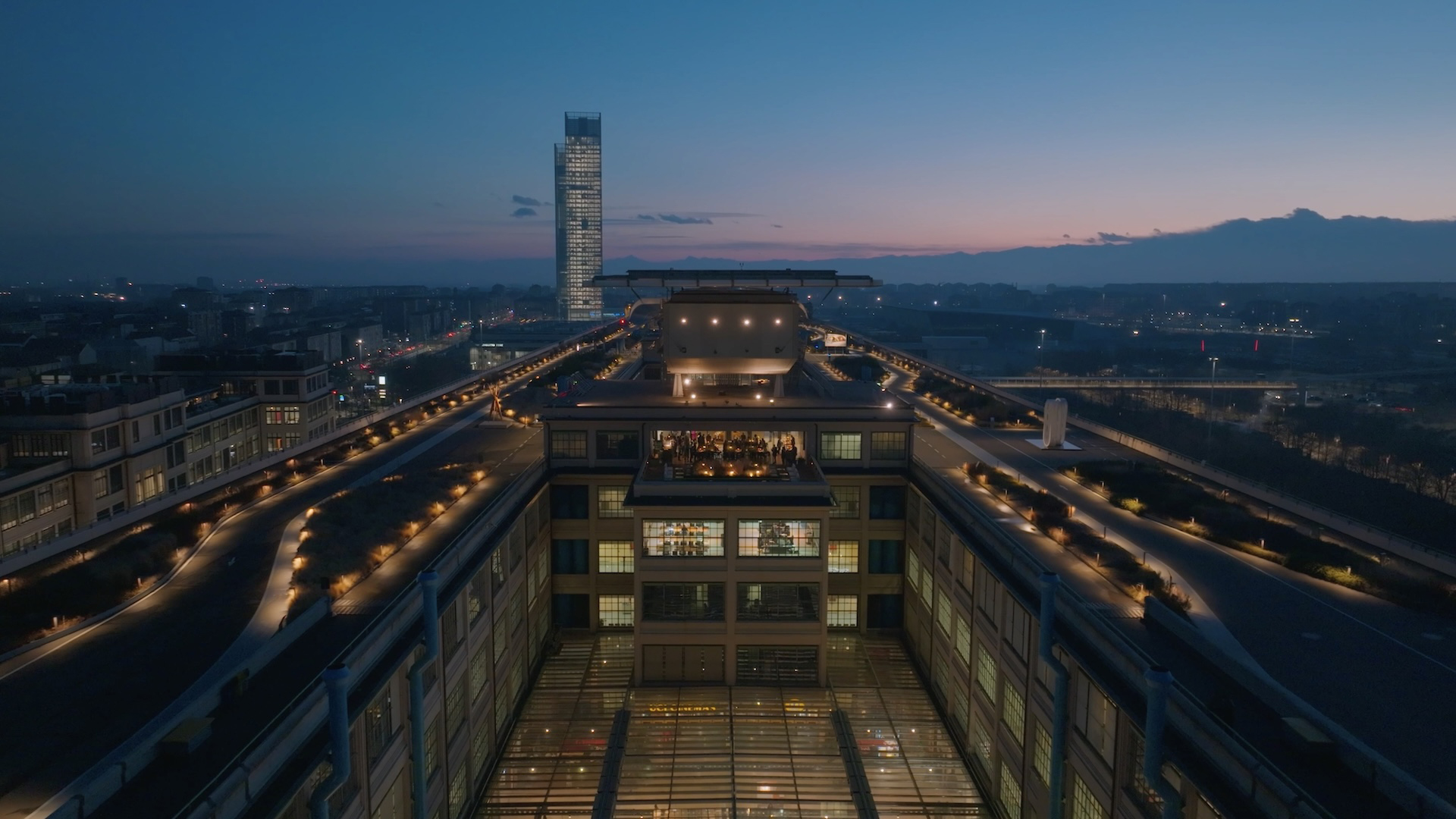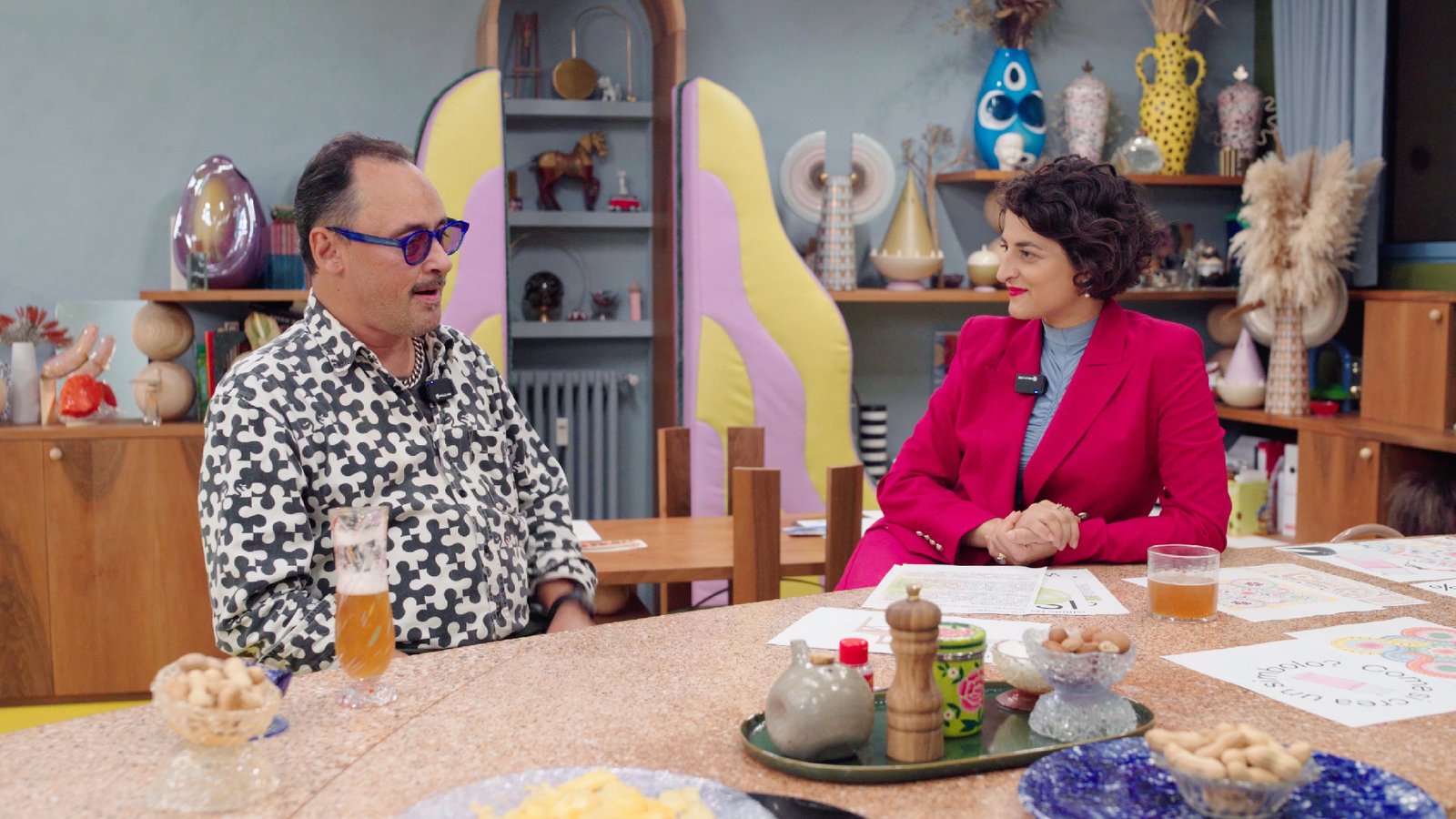
Giacinto Di Pietrantonio and His “Existential Collection”
Works, Memories, and Relationships of the Renowned Contemporary Art Critic
«Until the moment when, arriving with a piece of metal in hand at your bunker of books and artworks in Milan, you say to me, “Balance it right there in front of my desk, so when I sit down, I can look at it and it greets me”» wrote Paolo Icaro in 2020, recalling Germano Celant in an emotional tribute after the curator’s passing.
Yes, the bunker. The subject of curators' art collections is an intriguing one: do they exist? How did they come about? I remember that, in an interview many years ago, Achille Bonito Oliva, speaking about his Roman home, said he felt like those surgeons who, after work, do not want to see blood on their walls when they return home.
Giacinto Di Pietrantonio’s home in Moncalieri, a few kilometers from the center of Turin, where he lives with his partner Elisabetta Racca, hosts an «existential collection» as he defines it. He is one of the most brilliant, ironic, sharp, and intelligent figures in contemporary art in Italy, with a long history as a militant critic, institutional curator, professor of Contemporary Art History at Brera, editor-in-chief of Flash Art, and much more. But we are not here to list his CV—we are here to explore the works that are part of his everyday life.
However, he immediately clarifies, «I have artworks, but it cannot be called a collection if by collection we mean something one goes out and selects. 99% of these works are gifts from artists I have worked with and built relationships with—they are works of life.»
Are these works that tell the story of your curatorial journey?
«It’s somewhat a portrait of who I am; they are works by friends I admire. I have lived here since March 2022, and I have installed in every room the works I have gathered over time.»
Where did you live before?
«In Como from 2013, and before that in Milan since 1986, after moving from Bologna, where I studied at DAMS. But I come from Lettomanoppello. There are critics who come from small places, like Achille from Caggiano, and critics who come from big cities, like Germano from Genoa.»
Here, the walls are covered with artworks. Is your entire collection installed in these rooms?
«Almost all of it. And the works are everywhere, even in the dining room, where there are pieces by Marcello Maloberti and Mimmo Paladino. I have a series of drawings by him that I conceived in 1992 for the Territorio italiano project, an exhibition we held in January 1993. I also have a pencil drawing by Paladino that he made and gifted to me after an article I wrote in Flash Art, which he greatly appreciated.»
Do you have other works by artists from the so-called Transavanguardia movement?
«I have two or three drawings by Cucchi, including a paper piece, a diptych with a foot, flames, and holes burned into the surface with a cigarette. And on the other, an ellipse. Then, though it’s not related to Transavanguardia, I also have works by Luigi Ontani.»
A tableau vivant?
«I have a photograph of a performance from 1972; he gave it to me as a birthday gift. Another one he gave me when we held an exhibition at the Gamec. But I have never asked for works from anyone—in fact, I was sometimes tempted not to accept them. I also have another large piece by Luigi, about one and a half meters, with the dedication “To Giacinto, heart of the labyrinth.” Artists from those generations were more generous.»
 Giacinto Di Pietrantonio, photo by Anthony Cavarretta
Giacinto Di Pietrantonio, photo by Anthony Cavarretta
What do you mean?
«Garutti, Paladino, Ontani, and other artists up until the Transavanguardia years used to give away artworks—it was common practice because it pleased the artist to know that, if there was mutual respect, you could have one of their works at home. But they certainly didn’t need me; it was simply a generous gesture. Cucchi, for example, was already famous worldwide; he didn’t need a young critic to support his work. Most artists who came after them no longer have this kind of relationship; they don’t see this gesture as something valuable. But today’s world is different, of course. Part of the reason is that the Transavanguardia artists at that time only exhibited with each other or with equally established foreign names, refusing to show alongside younger generations. And so, it’s as if the flow of pleasure in sharing and the spontaneity of being together was interrupted.»
Is there a work that was meant for you but that you never received?
«Cattelan had given me a Zorro during the Prima linea exhibition in 1994, but I didn’t take it. However, I do have another one of his works, dedicated “very special for Giacinto.”»
 Giuseppe Chiari, “Se questa è arte…”, ca. 1999. From the collection of Giacinto Di Pietrantonio
Giuseppe Chiari, “Se questa è arte…”, ca. 1999. From the collection of Giacinto Di Pietrantonio
Do you regret it?
«Not at all, also because I have never sold anything. I don’t work with artists to acquire their works. Sure, it would have been nice to have it, but I don’t lose sleep over it.»
I see works by Vanessa Beecroft, who was your student, along with Laura Cherubini, at Brera.
«Vanessa has always been generous with me, as has Garutti—I have a large piece from his Horizons series.»
Then I see a work by Stampone, created specifically for you and your partner Elisabetta. A Sottsass, then Vedovamazzei, Giuseppe Chiari, Giulio Paolini, and Jan Fabre, with whom you have worked extensively. And there is also a piece by Adrian Paci.
«That one was an acquisition by Elisabetta.»
I also see a mirror by Pistoletto.
«The hand holding the apple in that mirror is mine. I was at Michelangelo’s years ago, and he asked me to hold this apple while he photographed it. And it ended up in a mirror, but it’s a multiple. Then he gifted me one.»
 Michelangelo Pistoletto, la mela reintegrata, ca. 2015. From the collection of Giacinto Di Pietrantonio
Michelangelo Pistoletto, la mela reintegrata, ca. 2015. From the collection of Giacinto Di Pietrantonio
In your studio, there’s also the large image La rivoluzione siamo noi by Joseph Beuys. I remember a photograph of you, which we projected together a few months ago when I invited you to Brera to talk about your work, where you are next to Beuys in Bolognano during one of your first interviews.
«I bought this from Amelio’s nephews, but it’s not signed. They had a few unsigned copies, and I took one. I could have bought more, but I don’t have a business mindset.»
Did you install the works yourself?
«Installed and nailed them one by one, with a hammer and a ladder. I come from a working-class family, and in families like mine, parents teach you how to do everything.»
Let’s wrap up. But tell me first—what does this collection make you think of?
«Of fifty years of hard work, in which I have a lot of fun.»
Cover Image: Portrait of Giacinto Di Pietrantonio, Tommaso Pincio.
Lorenzo Madaro is curator and professor of History of Contemporary Art at the Brera Academy of Fine Arts in Milan, where he also teaches Museology of the Contemporary.
He is a regular contributor to the daily newspaper ‘La Repubblica’ and the weekly ‘Robinson’ of the same publication. For the Milan pages of the newspaper, he has edited columns dedicated to artists' studios in the city, galleries and the archives of artists and designers. He collaborates with the Poli Biblio-museali di Puglia and Flash Art and is a member of the scientific and curatorial committee of the Fondazione Biscozzi Rimbaud in Lecce. Recent exhibitions he has curated include: Dimensionare lo spazio (A Arte Invernizzi, Milan, 2024), Yuval Avital. Bosco di Lecce (MUST, Lecce, 2023) Umberto Bignardi. Di nuovo a Roma (Galleria Valentina Bonomo, Rome, 2023); Pino Pinelli (Dep Art Out, Ceglie Messapica, 2023), Mimmo Paladino. He will have no title (Palazzo Parasi, Cannobio, 2023); Bringing everything back home (Museo delle Navi Romane, Nemi, 2023); Federico Gori. L'età dell'oro (Museo nazionale di Taranto, Taranto, 2022 - winning project of the PAC competition of the Ministry of Culture); Sebastiao Salgado (Castello di Otranto, Otranto, 2022), Andy Warhol (Monopoli, Castello Carlo V, 2022), Stati della materia (Gagliardi and Domke, Turin, 2021); Gianni Berengo Gardin. True Photography (Castello, Otranto 2020); Umberto Bignardi Sperimentazioni visual a Roma (1963-1967) (Galleria Bianconi, Milan, 2020); Silenzioso, mi ritiro a dipingere un quadro (Galleria Fabbri, Milan, 2019). He has collaborated with MAXXI (Rome), Quadriennale di Roma, Treccani Literature Festival and other institutions.



